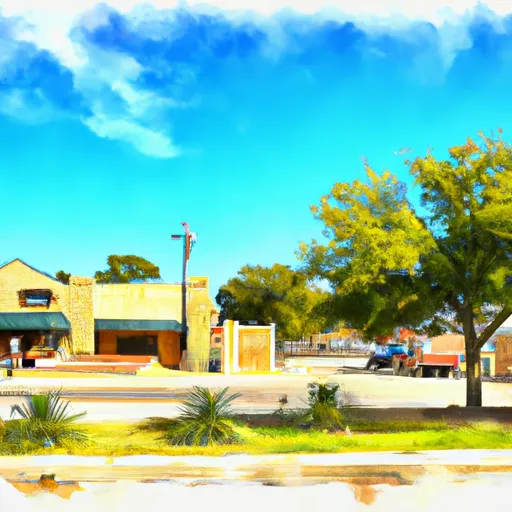-
 Snoflo Premium
Snoflo Premium
Get unlimited access to all our content
With no Ad interruptions! - Start Your Free Trial Login with existing account
Matador
Eden Index
Climate
9.7
•
Recreation
•
Community
•
Safeguard
3.9/10

Matador, Texas is a small town located in Motley County, situated in the southern plains of the Texas Panhandle. The region experiences a semi-arid climate with hot summers and cool winters. Summers are characterized by high temperatures reaching into the mid-90s°F, while winters see average lows around 30°F. Matador receives around 20 inches of rainfall annually, with the majority occurring during the months of May through September.
Hydrologically, the area is influenced by the Double Mountain Fork Brazos River, which runs through Motley County. The river provides a source of freshwater and supports diverse wildlife in the region. Matador also has several small lakes and reservoirs nearby that offer opportunities for fishing and boating.
For outdoor enthusiasts, Matador offers a range of recreational opportunities. The nearby Matador Wildlife Management Area provides opportunities for hunting, birdwatching, and hiking. The rolling plains surrounding the town offer ideal conditions for camping, nature photography, and wildlife observation. Additionally, the vast open spaces make Matador a prime location for stargazing and experiencing the breathtaking night sky.
What is the Eden Index?
The Snoflo Eden Index serves as a comprehensive rating system for regions, evaluating their desirability through a holistic assessment of climate health, outdoor recreation opportunities, and natural disaster risk, acknowledging the profound impact of these factors on livability and well-being.
Climate Health Indicator (CHI): 9.7
Matador receives approximately
580mm of rain per year,
with humidity levels near 63%
and air temperatures averaging around
17°C.
Matador has a plant hardyness factor of
7, meaning
plants and agriculture in this region tend to thrive during the non-winter months.
By considering the ideal temperature range, reliable water supplies, clean air, and stable seasonal rain or snowpacks, the Climate Health Indicator (CHI) underscores the significance of a healthy climate as the foundation for quality living.
A healthy climate is paramount for ensuring a high quality of life and livability in a region, fostering both physical well-being and environmental harmony. This can be characterized by ideal temperatures, reliable access to water supplies, clean air, and consistent seasonal rain or snowpacks.
Weather Forecast
Streamflow Conditions
Red-Pease
Area Rivers
Red-Pease
Snowpack Depths
Red-Pease
Reservoir Storage Capacity
Red-Pease
Groundwater Levels
Recreational Opportunity Index (ROI):
The Recreational Opportunity Index (ROI) recognizes the value of outdoor recreational options, such as parks, hiking trails, camping sites, and fishing spots, while acknowledging that climate plays a pivotal role in ensuring the comfort and consistency of these experiences.
Access to outdoor recreational opportunities, encompassing activities such as parks, hiking, camping, and fishing, is crucial for overall well-being, and the climate plays a pivotal role in enabling and enhancing these experiences, ensuring that individuals can engage in nature-based activities comfortably and consistently.
Nearby Fishing
Nearby Ski Areas
Catastrophe Safeguard Index (CSI):
The Catastrophe Safeguard Index (CSI) recognizes that natural disaster risk, encompassing floods, fires, hurricanes, and tornadoes, can drastically affect safety and the overall appeal of an area.
The level of natural disaster risk in a region significantly affects safety and the overall livability, with climate change amplifying these risks by potentially increasing the frequency and intensity of events like floods, fires, hurricanes, and tornadoes, thereby posing substantial challenges to community resilience and well-being.
Community Resilience Indicator (CRI):
The Community Resilience Indicator (CRI) recognizes that education, healthcare, and socioeconomics are crucial to the well-being of a region. The CRI acknowledges the profound impact of these elements on residents' overall quality of life. By evaluating educational resources, healthcare accessibility, and economic inclusivity, the index captures the essential aspects that contribute to a thriving community, fostering resident satisfaction, equity, and social cohesion.

